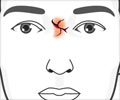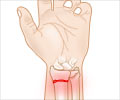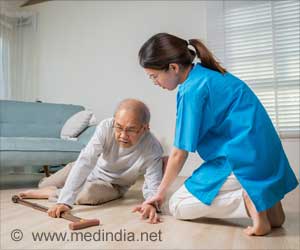Low levels of estradiol or high levels of sex hormone binding globulin (SHBG) are associated with an increased risk of osteoporotic fracture in older men, according to a new study
Low levels of estradiol or high levels of sex hormone binding globulin (SHBG) are associated with an increased risk of osteoporotic fracture in older men, according to a new study accepted for publication in The Endocrine Society's Journal of Clinical Endocrinology & Metabolism (JCEM). The study also finds that men with low levels of testosterone combined with high levels of SHBG are also at higher risk for bone fracture.
Testosterone is the predominant male sex hormone and estradiol is a sex hormone that provides most estrogen effects in both men and women. SHBG, a protein that binds to estradiol and testosterone in the blood, is known to reduce circulating sex steroid concentrations and has also been associated with fracture risk.Previous studies have shown that with aging, sex hormone concentrations decline and fracture rates increase. Until now, few studies have adequately assessed the nature of the association of sex hormones with bone fracture risk or how measuring sex hormones might be useful in clinical practice.
This new study followed 1,436 men aged 65 years or older, for approximately five years. Researchers measured sex steroid levels using liquid chromatography/mass spectrometry, a highly accurate chemistry technique used for the specific detection and potential identification of chemicals in the presence of other chemicals in a complex mixture. The results of the study clearly demonstrate that estradiol and SHBG levels were most predictive of fracture risk, and men with the combination of low estradiol, low testosterone and high SHBG levels were at even higher risk for fracture—more than three times as high as men with average levels.
"In clinical practice today, estradiol and SHBG levels are not commonly measured when assessing skeletal health or fracture risk in men," said Eric Orwoll, MD of Oregon Health and Science University and co-author of the study. "This practice should be revised. The results from our study strongly suggest that the measurement of both sex hormones, estradiol and testosterone, as well as SHBG levels in older men may help identify men at higher risk."
Dr. Orwoll pointed out that many of the study participants were aged 80 years or older, a segment of the population that is expanding and is at higher fracture risk but has not been previously studied in this context.
Other researchers working on the study include Erin LeBlanc, Carrie Nielson, Lynn Marshall and Jodi Lapidus of Oregon Health and Science University in Portland; Elizabeth Barrett-Connor and Gail Laughlin of the University of California in San Diego; Kristine Ensrud of the University of Minnesota in Minneapolis; Andrew Hoffman of Stanford University in Palo Alto, Calif.; and Claes Ohlsson of the Shlgrenska Academy in Göteborg, Sweden.
Source-Newswise
SRM















